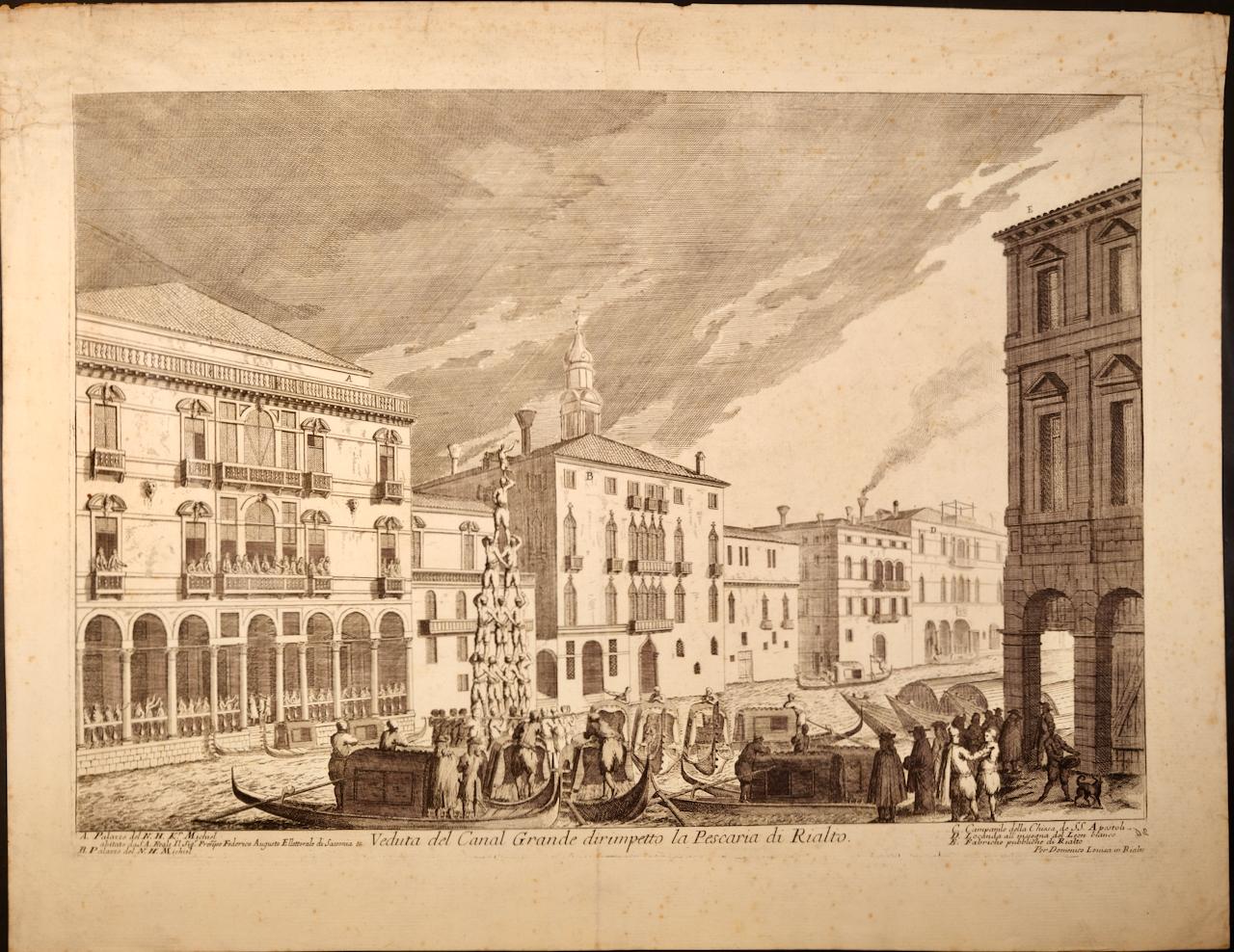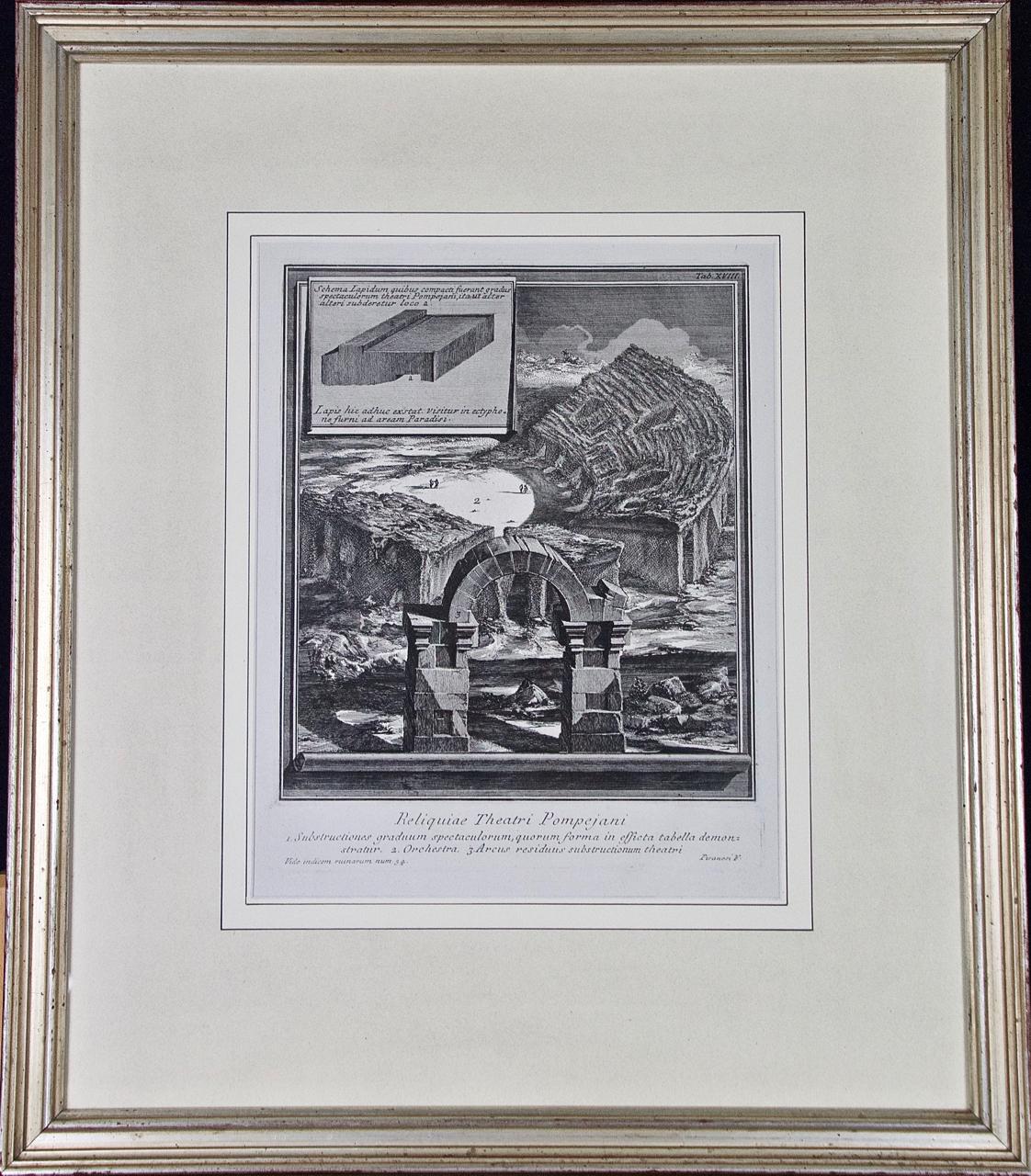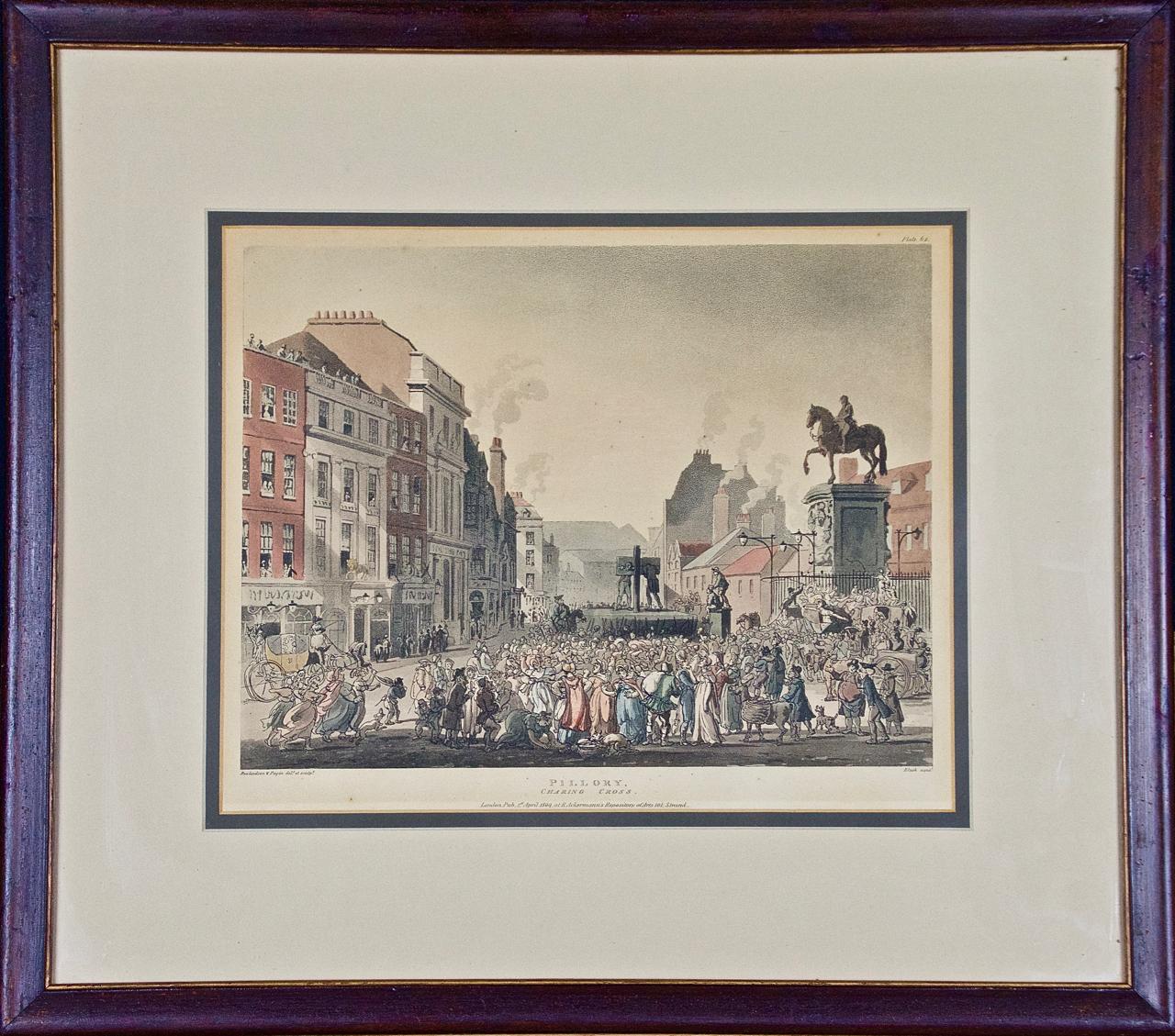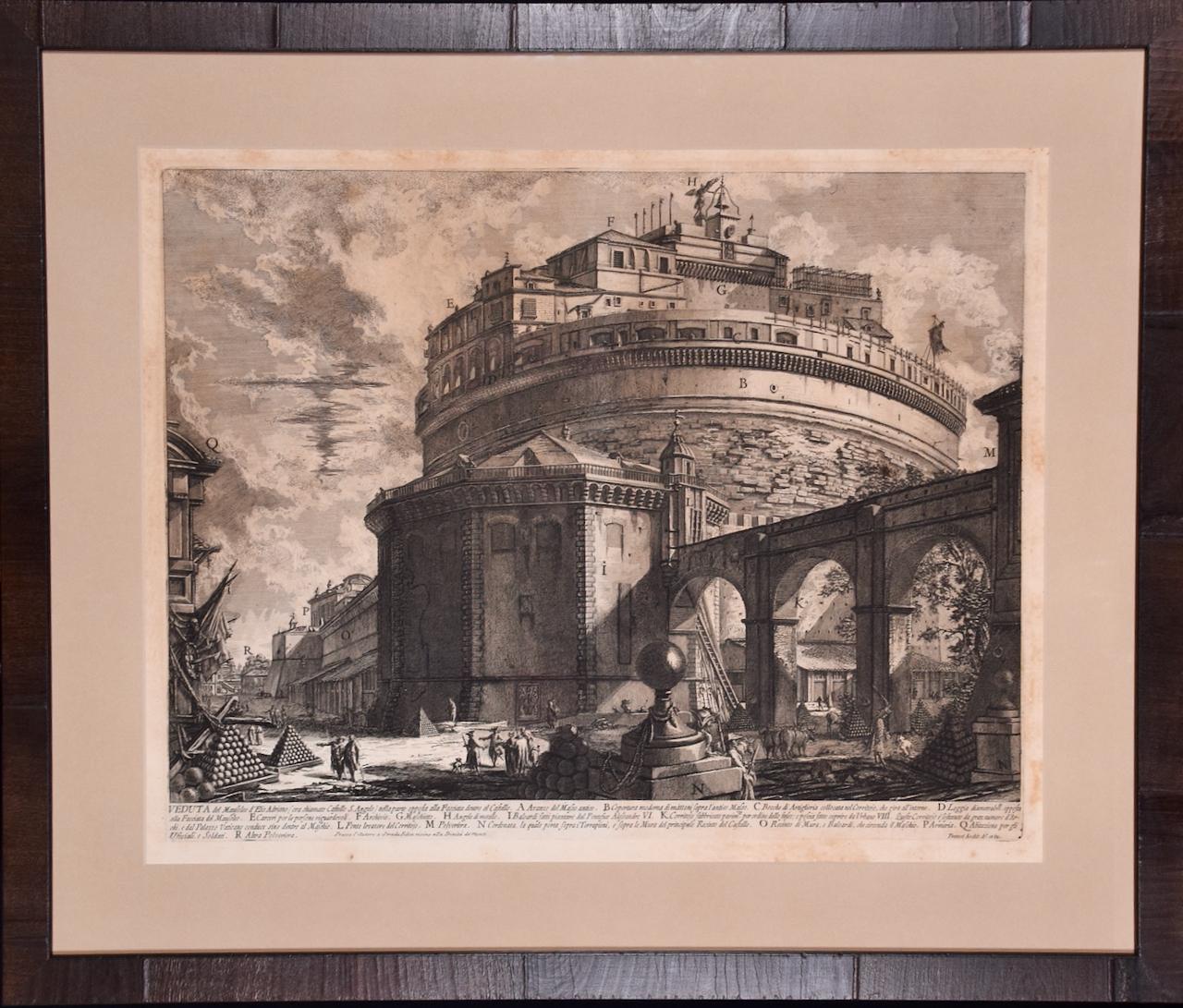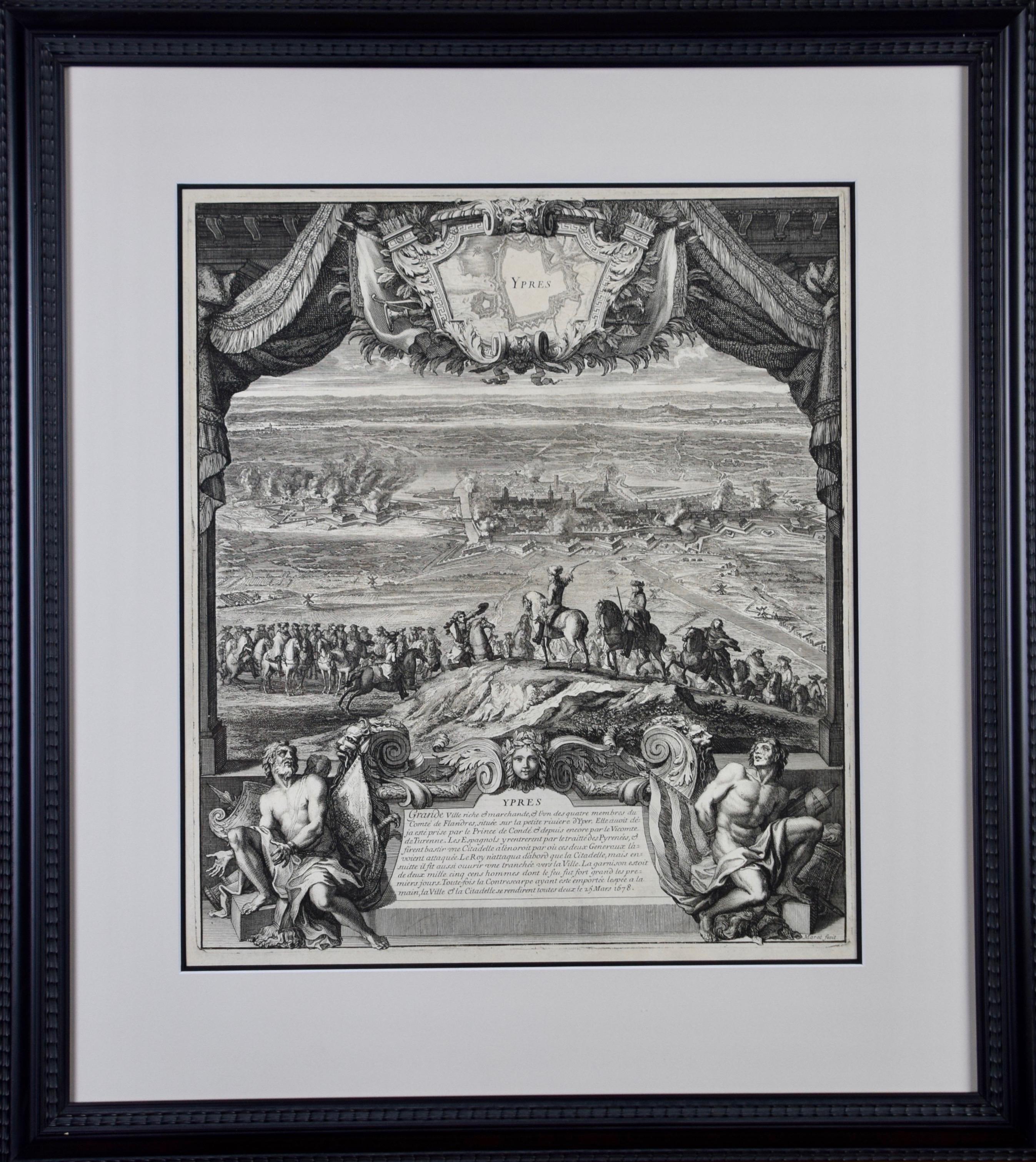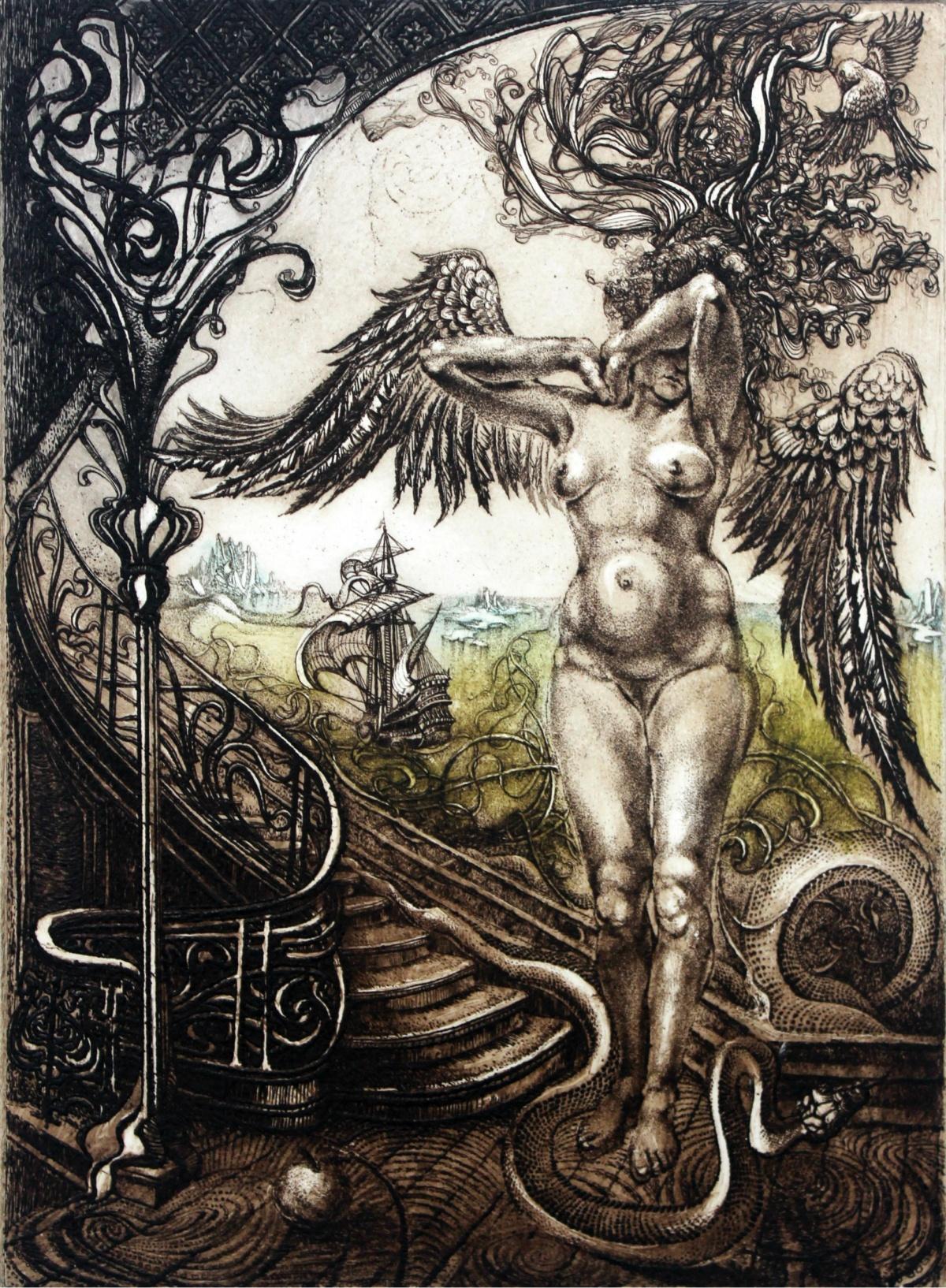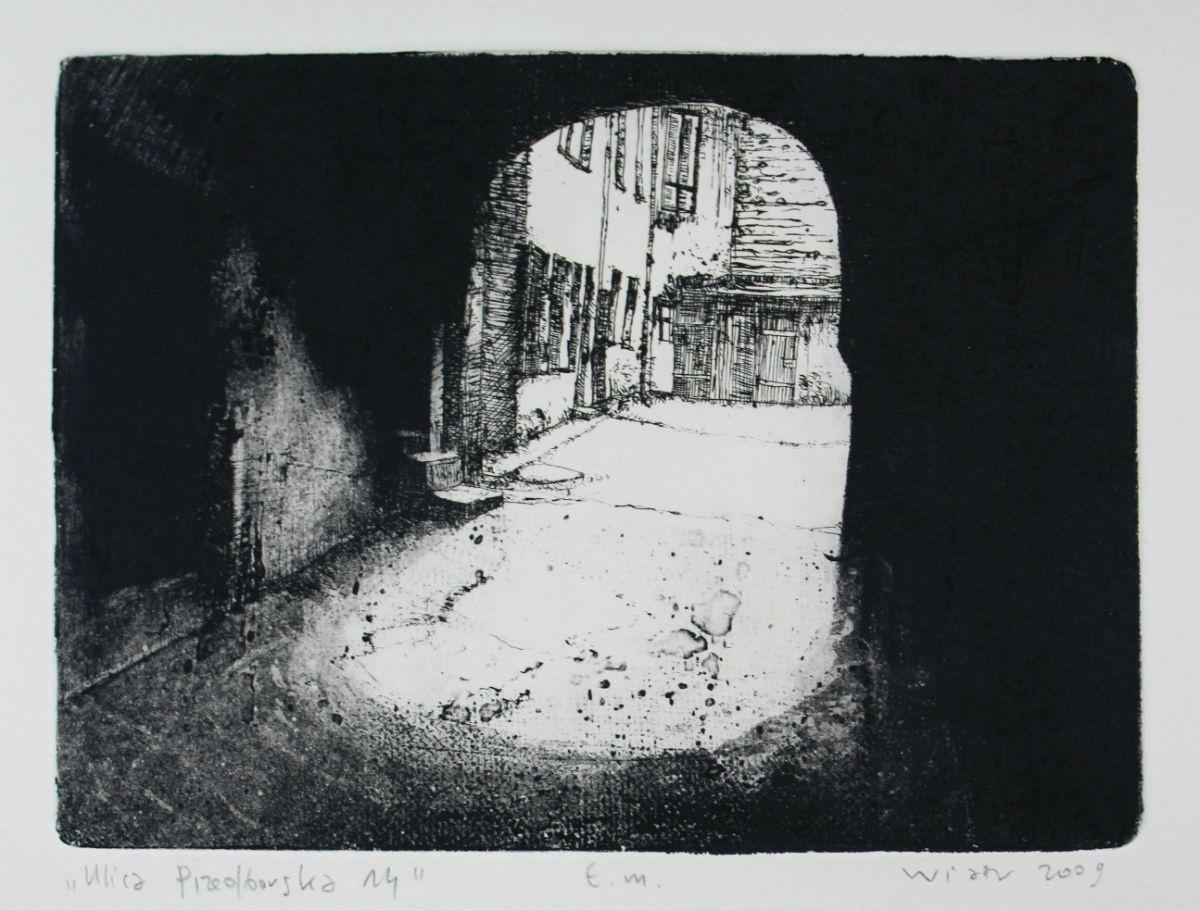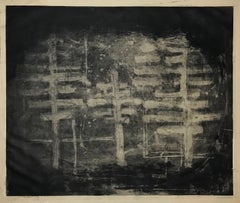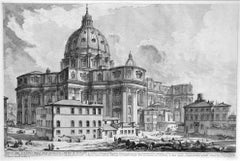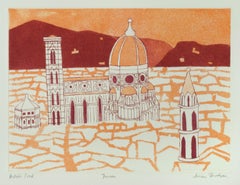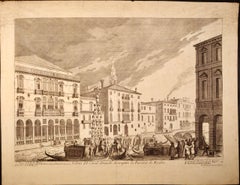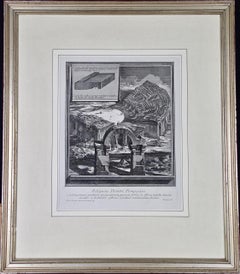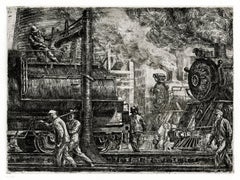
Erie R.R. Locos Watering
View Similar Items
Want more images or videos?
Request additional images or videos from the seller
1 of 5
Reginald MarshErie R.R. Locos Watering1934
1934
About the Item
- Creator:Reginald Marsh (1898-1954, American)
- Creation Year:1934
- Dimensions:Height: 13 in (33.02 cm)Width: 15.5 in (39.37 cm)
- Medium:
- Period:
- Condition:Excellent. Printed on Linweave Text Cover paper by J. Bertrand Andersen of Andersen-Lamb Photogravure Co. of Brooklyn.
- Gallery Location:Fairlawn, OH
- Reference Number:Seller: FA96811stDibs: LU140947323
About the Seller
5.0
Recognized Seller
These prestigious sellers are industry leaders and represent the highest echelon for item quality and design.
Platinum Seller
These expertly vetted sellers are 1stDibs' most experienced sellers and are rated highest by our customers.
Established in 1978
1stDibs seller since 2013
710 sales on 1stDibs
Typical response time: 1 hour
Associations
International Fine Print Dealers Association
More From This SellerView All
- Trees (Trees in Circle)By Louise NevelsonLocated in Fairlawn, OHTrees (Trees in Circle) Etching & drypoint with monotype inking, 1953-1955 Signed in pencil An unrecorded trial proof, printed on heavy wove proofing paper at Atelier 17, before the ...Category
1950s Abstract Landscape Prints
MaterialsDrypoint, Etching, Monotype
- Veduta dell'esterno della gran Basilica di S. Pietro in VaticanoBy Giovanni Battista PiranesiLocated in Fairlawn, OHVeduta dell'esterno della gran Basilica di S. Pietro in Vaticano (View of the Exterior of St. Peter's Basilica in the Vatican) Etching, 1748 From the first printing of the "Vedute di...Category
1740s Old Masters Landscape Prints
MaterialsEtching
- Duomo (Florence)By Julian TrevelyanLocated in Fairlawn, OHDuomo (Florence) Etching & aquatint , 1965-66 Signed, titled and annotated "artist's proof" (see photos) Edition: 100, this impression an artist's proof Reference: Silvie Turner. Julian Trevelyan Catalogue Raisonne of Prints.November 1, 2010. Reprint, Lund Humphries, 2010., No. 174 Provenance: Elizabeth Carrol Shearer, former President of the Print Club of Cleveland He moved to Paris to become an artist, enrolling at Atelier Dix-Sept, Stanley William Hayter's engraving school, where he learned etching. He worked alongside artists including Max Ernst, Oskar Kokoschka, Joan Miró and Pablo Picasso. In 1935, Trevelyan bought Durham Wharf, beside the River Thames in Hammersmith, London. This became his home and studio for the rest of his life and was a source of artistic inspiration to him. He became a confirmed Surrealist and exhibited at the International Surrealist Exhibition, held at the New Burlington Galleries in London. From 1950 to 1955, Trevelyan taught history of art and etching at the Chelsea School of Art. From 1955-63, Trevelyan worked at the Royal College of Art and became Head of the Etching Department. Because of his enthusiasm in his work and the desire to share it with others, Trevelyan became a highly influential teacher, with students including David Hockney, Ron Kitaj...Category
1960s Contemporary Landscape Prints
MaterialsEtching
- Le chemin de l'egliseBy Jacques BeurdeleyLocated in Fairlawn, OHSigned and numbered in pencil; Signed in the plate Edition: 75 Provenance: Frederick Keppel & Co. Inc. No. L 8621 (label) References And Exhibitions: Published by Edmund Sagot, ...Category
1920s Landscape Prints
MaterialsEtching
- Basilica of Madeleine, VezelayBy John Taylor ArmsLocated in Fairlawn, OHBasilica of Madeleine, Vezelay Etching, 1929 Signed and dated lower right (see photo) Annotated: "Third State" lower left Printed on a sheet of old book paper From: French Church Ser...Category
1920s American Realist Landscape Prints
MaterialsEtching
- A L'Ombre (In Shadow)By Louis LegrandLocated in Fairlawn, OHA L'Ombre (In Shadow) Etching & drypoint, 1905 Signed with the red stamp of the publisher Pellet (see photo) Edition: 50 on velin paper, signed and numbered Publisher: Gustav Pellet, Paris (his red stamp lower right, recto; Lugt 1193) Condition: Excellent Image/Plate size: 5-7/8 x 8-5/8" (14.8 x 21.8 cm.) Sheet size: 11 5/8 x 17 1/8" Reference: IFF 119 Exteens 229 Arwas 256 v/V Louis Auguste Mathieu Legrand (29 September 1863 – 1951) was a French artist, known especially for his aquatint engravings, which were sometimes erotic. He was awarded the Légion d'honneur for his work in 1906. Life Legrand was born in the city of Dijon in the east of France. He worked as a bank clerk before deciding to study art part-time at Dijon's Ecole des Beaux-Arts. He won the Devosge prize at the school in 1883.[2] In 1884 Legrand studied engraving under the Belgian printmaker Félicien Rops. Legrand's artworks include etchings, graphic art and paintings. His paintings featured Parisian social life. Many were of prostitutes, dancers and bar scenes, which featured a sense of eroticism. According to the Hope Gallery, "Louis Legrand is simply one of France's finest early twentieth century masters of etching." His black and white etchings especially provide a sense of decadence; they have been compared to those of Henri de Toulouse-Lautrec, though his drawings of the Moulin Rouge, the can-can dance and the young women of Montmartre preceded Toulouse-Lautrec's paintings of similar scenes. He made over three hundred prints of the night life of Paris. They demonstrate "his remarkable powers of observation and are executed with great skill, delicacy, and an ironic sense of humor that pervades them all." Two of his satirical artworks caused him to be tried for obscenity. The first, "Prostitution" was a symbolic drawing which depicted a naked girl being grasped by a dark monster which had the face of an old woman and claws on its hands; the second, "Naturalism", showed the French novelist Émile Zola minutely studying the thighs of a woman with a magnifying glass. Defended by his friend the lawyer Eugène Rodrigues-Henriques (1853–1928), he was found not guilty in the lower court, but was convicted in the appeal court and then given a short prison sentence for refusing to pay his fine. Legrand was made famous by his colour illustrations for Gil Blas magazine's coverage of the can-can, with text by Rodrigues (who wrote under the pseudonym Erastene Ramiro). It was a tremendous success, with the exceptional quantity of 60,000 copies of the magazine being printed and instantly sold out in 1891. In 1892, at the instigation of the publishing house Dentu, Legrand made a set of etchings of his Gil Blas illustrations. The etchings were published in a book, Le Cours de Danse Fin de Siecle (The End of the Century Dance Classes). Legrand took a holiday in Brittany, which inspired him to engrave a set of fourteen lithographs of simple country life called Au Cap de la Chevre (On Goat Promontory). It was published by Gustave Pellet who became a close friend of Legrand's. Pellet eventually published a total of 300 etchings by Legrand, who was his first artist; he also published Toulouse-Lautrec and Félicien Rops among others. He did not only work in graphics; he exhibited paintings at the Paris salon of the Société Nationale des Beaux-Arts starting in 1902. In 1906 he was made a chevalier of the Légion d'honneur. Legrand died in obscurity in 1951. A retrospective exhibition was held at the Félicien Rops museum in Namur, Belgium in 2006 to celebrate his graphic art. The art collector Victor Arwas published a catalogue raisonné for the occasion. Books illustrated de Maupassant, Guy: Cinq Contes Parisiens, 1905. Poe, Edgar Alan: Quinze Histoires d'Edgar Poe...Category
Early 1900s Art Nouveau Landscape Prints
MaterialsEtching
You May Also Like
- An early 19th C. satirical etching of John Bull kneeling before William PittLocated in Alamo, CAThis is an early 19th century hand-colored satirical caricature etching entitled "John Bull and his favourite statue of bronze!!", published and possibly engraved in London in 1802 by William Holland (1757-1815). It depicts John Bull (symbolizing the English people) kneeling in profile before William Pitt, who was prime minister of England at the time, and for whom the American city of Pittsburgh was named. Pitt is standing, pretending to be a statue. A rectangular pedestal beneath Pitt is inscribed: "Erected by Voluntary Subscription!" Pitt's body seems elongated, reminding that this a caricature. He is standing, looking to the left, his aristocratic nose held high in apparent arrogance and his hands are deep in his pockets, with his hat under his right arm. John Bull, is dressed simply for the time. He is on in his knees in a gesture of supplication, as if in prayer or begging for some action from a deity. He is holding his hat in both hands, looking up at Pitt. Trees and bushes are seen in the background. A caption showing John Bull's words in the upper left ironically reads: "O Wonderful Man! - how I revere thy sublime resemblance. - what obligations I am under to thee! what happy times thou hast brought about! Bread for nothing! Beef 3d per pound! Porter 3d per pot! a Goose 2 shillings! and a fat Turkey 3s.6d!! - whit every thing else cheap in proportion! - besides the wonderful decrease of Taxes!! - O Dear - O Dear I hardly know how to express myself, I feel so enraptured. - O that fine brass countenance how it shines with conscious Integrity!" The engraving is presented in a gold-colored wood frame and a tan-colored mat, with curved upper corners. The frame measures 18" high, 13.13" wide and 0.5" deep. The framing and mounting utilizes acid-free archival materials and it is glazed with UV conservation clear glass. There are a few faint areas of discoloration and spotting and an apparent short barely visible crease in the lower right corner of the inscription area. The print is otherwise in very good condition. William Holland was printmaker as well as a prominent dealer of satirical prints in London in late 18th and early 19th century. He carried works by the best known satirists of the time: Gillray, Rowlandson, Newton and Woodward, as well as his own creations. Holland along with the other prominent print-sellers of the time, Hannah Humphrey and Samuel Fores, were responsible for promoting the golden age of British caricature...Category
Early 19th Century Portrait Prints
MaterialsEtching
- Venice: 18th Century View of the Grand Canal by LovisaBy Domenico LovisaLocated in Alamo, CAThis is an early 18th century etching of the Grand Canal in Venice entitled "Veduta del Canal Grande dirimpetto la Pescaria di Rialto" by Domenico Lovisa, first published in 1720 in ...Category
Early 18th Century Landscape Prints
MaterialsEtching
- Piranesi 18th C. Etching "Reliquiae Theartri Pompejani" an Ancient Roman TheaterBy Giovanni Battista PiranesiLocated in Alamo, CAThis a framed Giovanni Battista Piranesi (1720-1778) etching entitled "Reliquiae Theartri Pompejani" (Remains of the Theatre of Pompey) from "Il Campo Marzio dell'Antica Roma" (The C...Category
Mid-18th Century Old Masters Landscape Prints
MaterialsEtching
- "Earl Sandwich Refusing to Leave His Ship": An 18th Century Etching/EngravingBy Robert SmirkeLocated in Alamo, CAAn 18th century etching and engraving entitled "Earl Sandwich Refusing to Leave His Ship While on Fire in the Battle of Sole Bay" by William Byrne (1743-1805), after a painting by Robert Smirke (1753-1845). It was published in London in 1798. The print is presented in a cream-colored mat. The mat measures 17.13" in height and 13" in width. The print is in excellent condition. Edward Montagu, the 1st Earl of Sandwich...Category
1790s Landscape Prints
MaterialsEngraving, Etching
- Venice: 18th Century View of the Basilica of S. Pietro di Castello by LovisaBy Domenico LovisaLocated in Alamo, CAThis is an 18th century etching of the Patriarchal Church or Basilica of S. Pietro di Castello in Venice entitled "Chiesa Patriarcale di S. Pietro di Castello" by Domenico Lovisa, fi...Category
Early 18th Century Landscape Prints
MaterialsEtching
- "Pillory, Charing Cross" by Rowlandson from "The Microcosm of London"By Thomas RowlandsonLocated in Alamo, CA"Pillory, Charing Cross" is an illustration (Plate 62) from "The Microcosm of London", published in London in 1809 by R Ackermann's Repository of Arts. The scene was created by one of the most famous British satirists and caricaturists of the late 18th and early 19th centuries' Georgian Period, Thomas Rowlandson, who drew the figures, while Augustus Charles Pugin drew the architecture. The plate was then created by Hill, Stadler and Bluck using a combination of aquatint and etching and was then hand colored with watercolor. Scenes illustrated in "The Microcosm of London" gives an accurate and often comical view of everyday life in London during the Regency Period of the early 19th century. While Pugin’s excellent architectural drawings capture the size and shape of the exterior as well as the interior of London’s principal buildings, Thomas Rowlandson’s insightful and often whimsical and satirical view of the city's inhabitants depicts the color and vitality of the late Georgian society, both rich and poor alike. This print depicts the "Pillory, Charing Cross", where criminals were brought and placed on display while secure in the stocks, as are seen in this print. A crowd is present in the square jeering at the prisoners. A statue of Charles I on horseback stands atop a very large pillar to the right. Shops with apartments are seen on the left. Young wealthy people frolic around and on a carriage on the right in front of the statue of King...Category
Early 1800s Other Art Style Landscape Prints
MaterialsEtching, Aquatint
Recently Viewed
View AllMore Ways To Browse
Etching French Landscape Bridge
Vintage Mardi Gras New Orleans
Solus Art
Gerald Farm
Drawing Candlelight
Mens Mule
Jessica Dunne
Kintai Bridge
Vintage Sheet Blanket
Item That Is 1 Million Dollars
Verner Etching
Alo Travel
Hirst No News Today
Ito Takashi
Architectural Folio
Vintage Sea Shell Prints
Hercules Coin
Wojtek Kowalczyk

